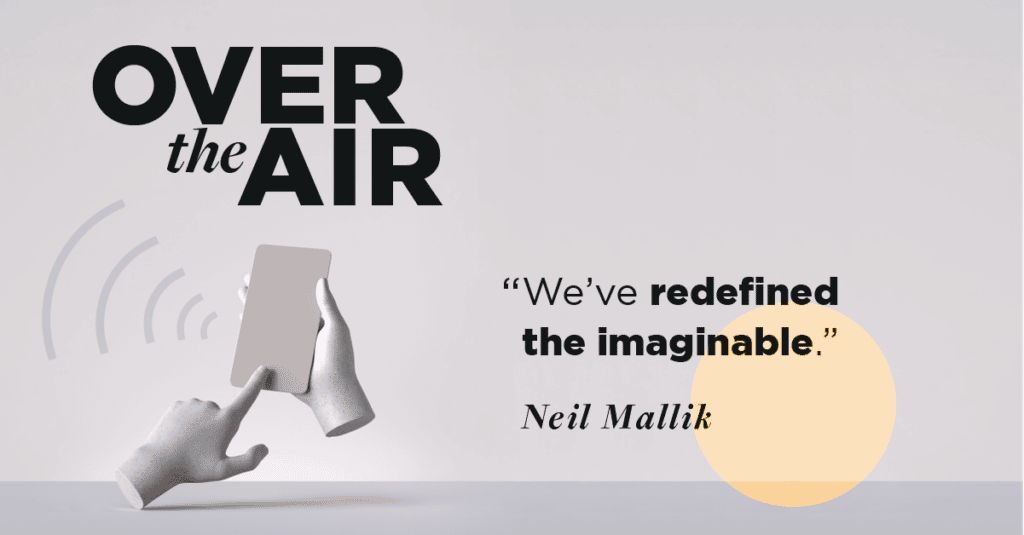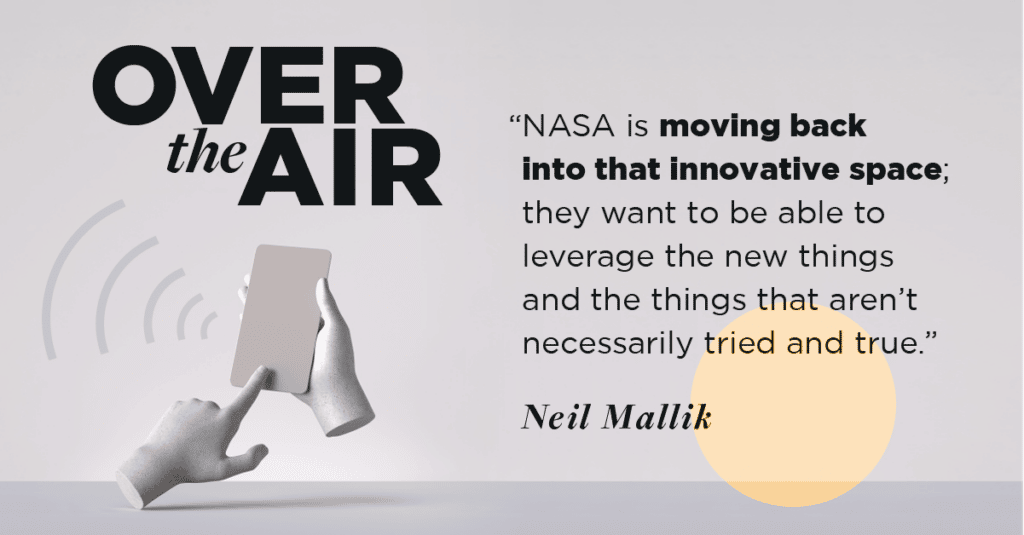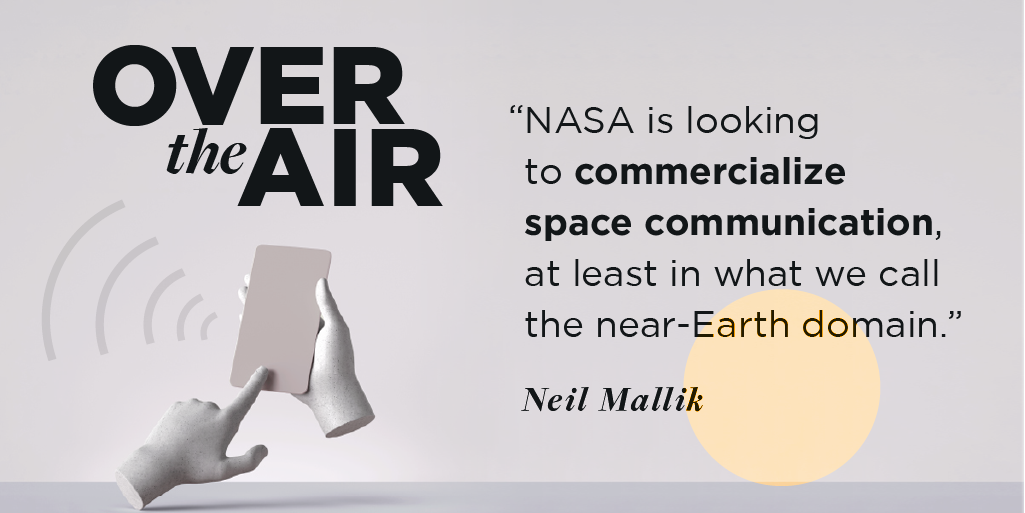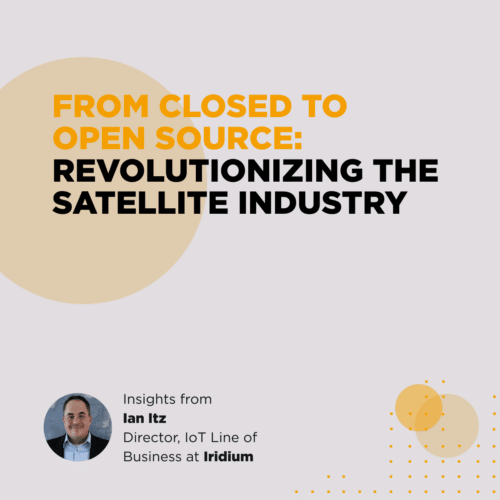Podcast
Episode 12: Redefining the Imaginable in Space Exploration & Communication
August 17, 2021
38 minutes
The most enticing engineering opportunities on earth involve finding solutions to problems that have traditionally been considered impossible. What could be more thrilling than that?
How about redefining what’s imaginable outside of earth’s orbit — in deep space?
Neil Mallik, Office of the Chief Engineer for Space Communications and Navigation at NASA, joined Over the Air to chat about the commercialization opportunities available in space exploration and communication.
We discussed:
- Openings for commercialization in the aerospace industry
- The NASA approach to private sector partnerships
- The technical challenges of interconnectivity outside of Earth
This post is based on a podcast episode with Ryan Prosser, Luke Wilhelm, and Neil Mallik. To hear more interviews like this one, subscribe to Over the Air wherever you listen to podcasts.
Gaps in Space Commercialization
Interested in making your mark in the aerospace industry? According to Neil, there are plenty of opportunities to do so.
Neil has worked in the industry for 16 years, first at Orbital Sciences before joining NASA. He believes that we’re entering a period characterized by large investments in the private sector and boundary-pushing innovations.
When NASA first started out, its human spaceflight aspirations were focused on getting to the moon, alongside other projects. The NASA of today, however, is looking to make advancements on many different fronts, across multiple areas of science and exploration.

“If you take a look at what we’re trying to do, it’s crazy,” he says. “We have the space station program that we’re still supporting [over 20 years]. We have commercial cargo, commercial crew, a lot of science missions — astrophysics and heliophysics — that we’re still supporting. We have our aeronautical division that is developing supersonic jets that have low contrails, are environmentally friendly, quieter, and now, we’re trying to send humans back to the Moon and then to Mars.”
The space agency is examining how the private sector can help with its ambitious agenda. The goal is to identify the capabilities needed to move forward and to identify companies that can fill those gaps.
“That really is the path of where NASA is going,” Neil says.
The NASA Approach
Neil outlined the NASA approach to private industry in four steps.
- Identify a need – They determine a need for certain capabilities. Think transporting a crew to the International Space Station (ISS) commercially.
- Provide seed money – They provide seed money to private industries to develop that capability. In the example of crew transport, they provided seed money to SpaceX and Boeing to develop reliable, cost-effective access to low-earth orbit.
- Purchase the service – Once the developed capability meets their requirements, NASA purchases it from the company. When SpaceX successfully built and certified its spacecraft and crew transport capability, NASA purchased those services to transport astronauts to the ISS operationally. Boeing is about to do the same.
- Create an industry – Once NASA buys those services, NASA has built an industry around that capability.
Now, NASA has the ability to go out and buy that required capability, rather than have to spend time and resources developing it themselves.

That’s all part of this new strategy of drawing on the contributions of the private sector to help these companies generate a return on investment and make the industry one to watch for years to come.
Space Interconnectivity
One particular area where they’re looking for help is near-Earth communication. The near-Earth domain covers anything from the Earth up to geosynchronous orbit.

“NASA is trying to figure out how to have private industry use their innovations to be able to allow for space communications and navigation for all our low-Earth orbiting spacecraft,” Neil says.
Additionally, it’s no secret that one of NASA’s current goals is to have humans explore deep space. But that comes with its own technical challenges from an interconnectivity standpoint.
Technical Challenges
Currently, NASA has the Deep Space Network — a collection of antennas positioned around the Earth that supported the Apollo missions and to this day, continues to support multiple deep space missions to Mars, Jupiter, Saturn, and further out to the Voyager missions.
Now they’re attempting to figure out the puzzle of interconnectivity in hard-to-connect places — like the far side of the moon. LunaNet is one of the solutions being developed.
“It’s a framework of a network of networks where you have a conglomeration of multiple assets and you can basically provide communications and navigations around the moon,” Neil says.
It would work a lot like cell phone service on Earth.
“Every time you look at your cell phone, everywhere you go you always see four or five bars — depending on your network service provider, of course — we want to be able to do that for our space missions and our crew,” he continues.
It’s still a challenge they’re actively trying to solve and that’s where private industry can step in and provide some innovative solutions.
It may seem impossible now. But NASA is in the business of turning the impossible into the possible. Want to help them out?
Never miss an episode of Over The Air by subscribing wherever you listen to podcasts.

Hosted by: Ryan Prosser
CEO at Very
As Very's CEO, Ryan collaborates daily with product, sales, and marketing to deliver the IoT solutions our clients look for. He is also a champion for our culture, fostering transparency and efficiency across our distributed team.










